Tri-County Summit Pledges to Strengthen SE Michigan
By Donald James Senior Writer, Real Times MediaAt the recent 14th Tri-County Summit, county legislators from Wayne, Oakland, and Macomb counties convened to address challenges collectively facing Michigan’s three largest counties. Hosted by Oakland County at the Detroit Zoo, the group of officials focused on water and broadband infrastructure challenges and opportunities facing the region.
“Issues like water quality and broadband access aren’t just local issues, but regional issues,” said Wayne County Commission Chair Alisha Bell. “The Tri-County Summit, like the one we just held, offered a tremendous starting point for all of us to work together on finding solutions.”
The decision to take on water and broadband infrastructure issues was actually determined at the 2021 summit, where commissioners from Wayne, Oakland, and Macomb counties formed study groups on the two topics. At the recent summit, the Broadband Equity Study Group shared its findings on regional broadband coverage and ways to best leverage federal funding opportunities.
The Water Infrastructure Study Group presented critical information on regulatory stormwater standards, lobbying regulations, and education resources for residents. In addition, National Association of Counties officials offered their expertise and experience in addressing water and broadband issues in collaborative settings.
At the summit’s conclusion, commission chairs signed a pledge vowing to continue working together to address issues significant to the region. Moving forward, the tri-county leadership committed to implementing a tri-county approach to federal and state infrastructure grant opportunities and actively seek joint grant applications to submit with the support of all three counties. The signees also pledged to evaluate and, if necessary, jointly challenge the accuracy of newly released FCC broadband maps, which determine federal funding for improving broadband access and speeds across the region. In addition, the three county commission chairs agreed in writing to create a water legislative agenda by the first quarter of 2023 to jointly advocate and advance in the next state legislative session.
First hosted in 1998, the Tri-County Summit was created as a forum for Wayne, Oakland, and Macomb county legislators and chairs to identify and collectively work together to address common issues. Previous topics have included but were not limited to, mental health, criminal justice, economic development, transportation, and regional quality of life.
“This year’s summit provided a unique opportunity for commissions across Southeast Michigan to hear from experts on the issues facing our region and begin exploring how we can move forward to-

News Stories, and Issues to Follow in 2023
History-making
By Donald James Senior Writer, Real Times MediaIt’s challenging to identify a collection of local, regional, state, and national news stories and issues that will potentially impact the lives of Black Metro Detroiters and others in 2023. After all, like 2022, the year 2023 will produce thousands of news stories touching the broad spectrums of life in Detroit and beyond. Yet the Michigan Chronicle has identified a collection of news stories for readers to follow next year, some with origins and roots stemming from 2022 or before.
Gov. Gretchen Whitmer and Lt. Gov. Garlin Gilchrist made news on the first day of January when they were sworn in for a second term as Michigan’s top-two elected officials. January will also see Democratic State Rep. Joe Tate, a native Detroiter, sworn in as Michigan’s first-ever Black Speaker of the House.



In Detroit, “water shutoffs” will be on the minds of many residential customers - especially low-income residents - as the almost three-year water moratorium ends at midnight on January 1. However, the Detroit Water
and Sewerage Department (DWSD), under the directorship of Gary Brown, has been touting the 2022 rollout of DWSD’s Lifeline Plan, Detroit’s first income-based water affordability initiative for eligible customers. For those not eligible, DWSD’s 10/30/50 down payment of the balance plan is available.
City, community, and other stakeholders hope residents in need of assistance will enroll in one of the plans to prevent “water shutoff” actions in 2023, which will avoid a repeat of national and international stories written about the city, like the ones in 2014 when DWSD executed massive water shutoffs, drawing the ire of human and civil rights advocacy groups and the United Nations. Several civil rights organizations in Michigan have recently gone to federal court in hopes of securing a ruling to stop water service disruptions in the city and extend the moratorium.
New Midwest Coalition Prioritizes BIPOC Health for Seniors
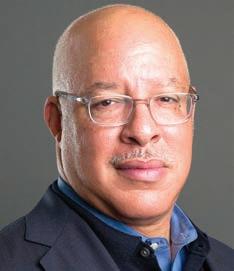 By Sherri Kolade
By Sherri Kolade
One hundred million.
That’s how many COVID cases have cropped up around the United States since March 2020 with a total number of deaths of over 1 million, according to the Centers for Disease Control and Prevention.

Many people are well aware that many Black, Indigenous, and people of color (BIPOC) members of the collective community bore the brunt of these statistics made real with higher death rates because of poverty and healthcare inequality.
According to a Centers for Disease Control and Prevention study, Blacks,

Latinos and Native Americans are dying from COVID-19 nearly three times the rate of white people and these groups are still dying at a higher rate, especially senior citizens – one of the most vulnerable population groups.
Wayne County was most impacted by the virus and in Detroit, Black people represented over 75 percent of known COVID-19 diagnoses by race and nearly 90 percent of deaths.
“As a society and community in the United States, we basically have arrived at the place where we are learning to live with the pandemic,” said Bridget Hurd, Blue Cross Blue Shield of Michi-
Michigan COVID-19 Task Force on Racial Disparities member. “However, there is still a pandemic because there are still nearly 400 people dying every day because of COVID-19, and in Michigan, we are averaging just over 2,000 cases of the coronavirus per day. In Detroit, the numbers are ticking up.”
Other health issues have staggering statistics, too.
Black people worldwide have rates of high blood pressure that are on par with white people, however in the United States the difference reveals that 41 percent of African Americans have high blood pressure in comparison to 27 per-

cent of white Americans, WebMD reported.
Black adults in the United States are also 60 percent more likely than white adults to be diagnosed with diabetes, according to reports.
Not one to rest on their laurels in finding solutions, a new Midwest equity-health-based coalition recently unveiled a strategy to develop answers to inequitable systems that create more roadblocks to accessibility.
The Midwest Health Equity Coalition was recently established by a diverse group of mission-aligned health sys-
From
the rights of all women are continued.
A feel-good sports story that will receive well-earned attention is the surprising turnaround of the Detroit Lions and their push for a playoff – that’s right – a playoff spot this season.
equality for African Americans will attract thousands of people locally, regionally, nationally, and internationally to its 68th annual Fight for Freedom Fund Dinner in Detroit.
Elected officials are also working to keep Roe v. Wade intact thus holding off Michigan’s 1931 trigger ban. Governor Gretchen Whitmer released a statement saying, in part:
cine and healthcare, may be adversely impacted by the decision to overturn Roe v. Wade.
“PPMI has been preparing for this moment since the results of the 2016 election were final. We recently filed a lawsuit to stop the 1931 law from going into effect, and we’ve also asked the state courts to affirm that the Michigan constitution does already contain a right to abortion. Our advocacy arm, Planned Parenthood Advocates of Michigan, is a founding member of the coalition that launched Reproductive Freedom for All, a ballot initiative to affirm the right to abortion and reproductive freedom in the state constitution,” said Vasquez Giroux. “The bottom line is that we will do everything in our power to keep abortion legal in Michigan, and if SCOTUS makes that impossible, we will do everything we can to ensure our patients can access the care they need.”
After starting the season 1 and 6, the Lions enter the new year at 8 and 8 with a shot of clinching the NFC wild-card spot.
The Dinner is the largest and oldest event of its kind in America. Typically held in the spring, a firm 2023 date has yet to be established. However, Chris Ilitch, president and CEO of Ilitch Holdings, Inc., will serve as Senior Corporate Chair of the historic event.
“The words ‘Roe overturned’ are no longer theoretical. I want every Michigander to know— no matter what happens in D.C., I’m going to fight like hell to protect access to safe, legal abortion in Michigan…”
In 2023, will President Biden’s $52 billion CHIPS and Science Act signed last year create volumes of jobs in Detroit and across Michigan as expected and make headlines? The passing of the Creating Helpful Incentives for the Production of Semiconductors (CHIPS) and Science Act has been hailed by Michigan Democratic leaders like Gov. Whitmer, U.S.
More than legal implications, overturning Roe v. Wade would impact several systems across the spectrum. With the potential to drive both foster and adoption numbers upward, a ban on abortions could leave many women to choose a less safe route restoring ‘back alley’ and illegal abortion practices, including self-abortions. Moreover, African American women and women of color, who already have a long-storied history with access and inclusion in medi-
In mid-November, not long after the Midterm Elections, Detroit was named one of the world’s top 10 cities for national and international travelers to visit in 2023, according to Travellemming.com, a well-respected travel guide source reporting on hundreds of global locales. The travel guide cites Detroit’s almost 322-yearold history, the city’s robust revitalization, broad culture, museums, Art Deco architecture, and must-see landmarks as impressive. Interestingly, Detroit and Lafayette, Louisiana, were the only two American cities to make the top-10 listing of the 50 municipalities named.
“What we are really concerned about is the impact on our patients. Access to abortion is already out of reach for far too many Michiganders, especially Black people and people of color who face additional barriers to care as a result of systemic inequalities and institutional racism. Losing access to legal abortion will impact those communities most, forcing people to become parents or expand their families against their will. Being able to decide and control if, when and how to become a parent is central to building and living a healthy, happy life,” said Vasquez Giroux.
what the Supreme Court will rule in the upcoming days. Despite the decision, advocates on both sides of the argument are willing to continue their pursuits.
more than $100 million dollars into the local economy in 2023.
The year 2023 is expected to be filled with hope and forward movements for Metro Detroiters. Yet, no one knows what the future will bring as riveting news stories – good and bad – can happen in the blink of an eye 24-7 with ripple effects enduring for days, months, and years. Nevertheless, the Michigan Chronicle will continue to track and report on important stories throughout 2023 that impact the broad lives and communities of African Americans and others living, working, and playing in Detroit and the region.
“Overturning Roe v. Wade would be a terrible break with nearly 50 years of judicial precedent and – more importantly – a blow against individual freedom. It is my hope that the majority of justices will reject the findings of this draft. If that is not the case, we need to stand with Senate Majority Leader Schumer and Gov. Whitmer in support of their efforts to preserve the right to reproductive freedom,” said Chair Alisha Bell, on behalf of the Wayne County Commission.
From page A-1
Throughout 2023, look for news stories associated with the changing status of the COVID-19 pandemic and its effects on schools, businesses, and other sectors of society. While many people act as if things have returned to normal, health experts across the state, including the Governor’s Michigan Coronavirus Task Force on Racial Disparities led by Lt. Gov. Garlin Gilchrist, have continuously declared the pandemic is still with us. In addition, there are warnings about the spread of COVID-19, the flu, and Respiratory Syncytial Virus (RSV) in communities, especially during the colder months of January, February, March, and even April of 2023.
corporate boards to have more diverse representation and pass the legislation.
The Detroit Branch NAACP and its fierce advocacy history of fighting for economic and social
Better collection and analysis of criminal justice data: BLAC recommends data collection and professional analysis be initiated with the assistance of our Attorney General, Michigan Commission on Law Enforcement Standards (MCOLES), Association of Michigan Prosecutors and other stakeholders to collaborate, collect and analyze data strategically.
islature adopts it.
Senators Debbie Stabenow and Gary Peters, and Congresswoman Haley Stevens as the manufacturing breakthrough expected to create and protect tens of thousands of jobs in the state’s auto and other industries.
Whitmer vows to fight hard to ensure that Michigan brings home as many resources and jobs as possible from the passage of the massive CHIPS and Science Act.
Increase school funding: Statutory changes to increase the School Aid Fund revenue by at least $3.6 billion and establish a permanent weighted funding formula based on student and community needs and universal preschool (0-3).
tems, a Medicare Advantage health plan, a company that provides healthcare analytics solutions, the association for community health centers in Illinois, key figures in health policy and additional health partners. The alliance will work as a group of experts devoted to finding best practices that may be used nationally to reduce racial health disparities among underprivileged seniors in Indiana, Michigan and Illinois.
Ban no-knock warrants: Urging the House Government Operations Committee to hold hearings on HB 5013 and other legislation that would ban or limit the use of noknock or quick knock warrants, and urging the state legislature to pass meaningful reform and advise Gov. Whitmer to sign the bill after the leg-
Reject censorship in history instruction: Encouraging Gov. Whitmer to ensure the goal for Michigan schools should be history instruction that is presented by professionals with the subject matter expertise, pedagogical skills, and judgment necessary to present complex information to students that are grounded in provable facts and add to the understanding of modern-day America.
The coalition is the brainchild of Dr. Eric E. Whitaker, founder and executive chairman of Zing Health and former director of the Illinois Department of Public Health, and Andy Slavitt, healthcare advisor and former administrator of the Centers for Medicare and Medicaid Services.
Initial coalition membership includes Sinai Chicago, Illinois Primary Health Care Association and CareJourney. Additional key partners will be announced in the next few months.
From
the chancellor embraces.
Beyond the scope of pro-choice versus prolife, the fight for reproductive choice is one of freedom. As Michigan officials work to ensure each woman who finds herself in the position to choose has access to care without the threat of legal action, many wonder
The health committee recommends reviewing state licensure policies to address the barriers that Black psychologists face in obtaining licensure in Michigan.
Detroit will garner plenty of international news and attention this spring and summer when it hosts many “global-favorite” attractions and events, including the Movement Electronic Music Festival (Memorial Day weekend), the Grand Prix (running through the streets of Detroit again from June 2-4), the North American International Auto Show (September 13 - 24 at Huntington Place and surrounding downtown Detroit locations), and the downtown Detroit Jazz Festival, the world’s largest free jazz event held around Labor Day. The events collectively are expected to pump
can be impactful.”
Ensure equitable distribution of state health funds: Ensure all Michigan communities with a significant Black population receive adequate funds to address mental health issues.

“Equity gaps in care and access disproportionately impact Black and Brown communities, resulting in a higher prevalence of chronic care and racial disparities in health outcomes,” Whitaker said. “This coalition will identify, support and shine a light on innovative and cost-effective ways that front-line healthcare providers deliver preventative care to seniors — in particular, Medicare-eligible and disabled people of color. The goal is to ultimately drive better care so that all people can attain the services they need, regardless of race, disability or socioeconomic status.”
Increase mental health supports for the Black community: Recommending Michigan set a goal of increasing the number of Black mental health service providers by 20% each year over five years.
Dr. Curtis Ivery

Protecting Black voting rights: Urge state officials to remain vigilant in the fight against schemes to disenfranchise Michiganders of color.
“BLAC members have worked hard to identify the needs of the Black community and we feel these recommendations will provide a solid first step towards breaking down barriers in education, community safety, health and business,” said BLAC Co-Chair Dr. Donna L. Bell.
The coalition’s top aims include researching the societal factors that increase the likelihood that patients may develop chronic illnesses and have trouble controlling them. To increase the quality and accessibility of care, the coalition’s study findings will be utilized to pinpoint individuals who might profit from home-based services or social and community assistance.
people believe that they need to for themselves and others to live better lives.”
“The coalition is committed to addressing inequities in healthcare and reducing disease burden in Black communities,” said Slavitt. “Our goal is to ensure underserved communities receive the preventative services and quality care they need and deserve to improve health outcomes.”
Whitaker told the Michigan Chronicle recently that the Midwest Health Equity Coalition came about because there are many different health systems and other entities “doing great work” in health equity but more could be done collectively to find answers to rising BIPOC-related health issues like facing higher COVID cases, diabetes, hypertension and other issues.
“I think of transformational leadership as a thoughtful approach that causes people to change but also causes the systems and circumstances they are operating in to change too,” Ivory said. “Transformational change doesn’t just ask people to do certain things; it asks them to change their view of what’s possible and excites them to drive that change together because they believe that what they’re doing will create positive change for everyone. That’s how entire systems change because
“They’re doing it [finding solutions] in their small part of the world and no one knows that this work is going on,” Whitaker said. “One aspect of the Coalition is to really to shine a light on promising models that can improve diabetes, hypertension and behavioral health. ... The other piece of it is really coming together jointly with these different health systems and health associations, part of the Coalition to break new ground in terms of developing clinical models that
Tri-County Summit
From page A-1
gether in the most effective and powerful way possible,” said Oakland County Board of Commissions Chair David T. Woodward. “I can’t wait to continue this work with my counterparts to ensure improved broadband equity and water infrastructure for everyone in the tri-county area.”
Don Brown, Macomb County Board of Commissioners chair, added, “I am proud of the efforts made by our tri-county team since we renewed the summit in 2021,” he said. “These issues affect our entire region, and we can tackle them better together.”
Bell said that she and the Wayne County Commission will host the 2023 Tri-county Summit, where other issues connecting the three counties will be on the table for regional discussion. Bell
In 2023, the group will present its preliminary conclusions and suggestions for resolving healthcare disparities.
“Chancellor Ivery is a true transformational leader and an outstanding CEO, who is more than worthy of the CEO of the Year Award he just received, “ said Prof. James C. Mays, who teaches entrepreneurship and supply chain management at WCCCD’s Corporate College. “In his 27 years at WCCCD, Dr. Ivery has elevated WCCCD to become nationally recognized for excellence and innovation and preparing our students professionally and personally to do great things in the world.”
BLAC will hold a virtual town hall meeting to discuss its policy recommendations on Thursday, May 12 at 4 p.m. Join BLAC and a virtual audience in discussing the recommendations to support the Black community.
From identifying best practices, driving Medicare policy changes, and improving access to preventative health care among Medicare-eligible and disabled seniors of color, the Coalition will reduce racial health disparities among underserved seniors while looking at best medical practices that can be replicated across the country.
BLAC is housed in the Michigan Department of Labor and Economic Opportunity. Members represent many professional backgrounds, including economics, law, public safety, health and wellness, arts and culture and media. They leverage their experiences and expertise to make recommendations to the governor on critical issues affecting the Black community.
To learn more about BLAC and this upcoming event, visit www.michigan.gov/BLAC.
Quality care for diabetes and other conditions can be challenging in communities with limited practitioners or primary care physicians who may not be acquainted with disease management issues. The coalition is working on initiatives that include assistance in getting necessary appointments, transportation and social services to help manage these conditions. Additional enhancements include benefits such as free insulin and no-cost continuous glucose monitoring to eligible seniors, irrespective of their ability to pay.
The coalition will report its initial findings and recommendations for addressing inequities in healthcare in 2023.
Senior Writer Donald James contributed to this report.
said the summit would perhaps take place in September.
“I believe regional transit will be one of the issues we’ll tackle at the 2023 summit,” Bell said. “We haven’t got the full agenda set yet, but there are several areas that we need to look at, and regional transit is certainly one of them.”
Asked about the progression of the level of cooperation between the three counties, Bell said,
“The level of cooperation between Wayne, Oakland, and Macomb counties is much better than it was decades ago,” she said. “The tri-county chairs are working very well together, and I will go out on a limb to say that the County Executives are also working well together. We all understand that we have our own individual counties to deal with, but we are also part of a region and have to work regionally together to make sure that we all are successful in moving forward on issues that impact all of our residents.”
Neighborhood Groups Provide Gift Economy
By Rasha AlmulaikiFor anyone who has either thrown away something that had a longer shelf life or needed an item but couldn’t afford it, there is an alternative—the gift economy.
Detroit hosts several “Buy Nothing” neighborhood groups on Facebook with hundreds of residents connecting to give, ask for and receive items and services with no ulterior motive other than to share their resources and skills with one another.
“I’m sure we’ve all put stuff on the curb before and we were like ‘man, I’d hate to just throw it away’ or find time to donate to Goodwill,” said Josie Whelan, administrator of the Facebook group Buy Nothing Group-Boston Edison Area, Detroit.
“One, you could instead give it to someone for free and also, you find a more pointed way to find stuff you need or things other people need.”
Whelan said as a teacher she has made personal requests for items to use in her classroom such as baskets, tins and other useful items for student activities.
The Buy Nothing group is a private forum, and an individual must request to join as a resident of that area or an adjacent neighborhood. The group currently has 339 community members.
An estimated 6.5 million Americans are part of 7,500 Buy Nothing communities in over 40 countries. As a community-building social movement, residents are encouraged to build a Facebook group and encourage local residents in each neighborhood to join and exchange items they no longer need and donate those items to someone who has use for them.
Whelan said the community group has also strengthened her relationship with her community.
“If I’m doing a drop off or a pick up, I can just talk to the person in a 10 to 20 minute conversation and a lot of what we talk about is about the neighborhood. I’ve only lived here for a couple of years and I’m really interested in the long-term history so I always appreciate it when I find out I am talking to someone that has been here for 40-50 years.
“I get a chance to understand their perspective on the community and just connect with one another. Now when I am driving around here, I know who lives in that house or this house. I know who my neighbors are and I still keep contact with them and we keep each other in mind if we know the other person needs particular things.”
A gift economy is a practice based on gift giving, in which services or goods get exchanged with no expectation of payment or transaction for the value of the services or goods. This differs from our traditional market economy in which people exchange or purchase an item for money.
The obvious advantage of a gift economy is that’s inexpensive and allows an individual to acquire something they need without navigating a price tag.
Beyond just the excitement of getting free stuff is the environmental-friendly aspect of saving items from the trash heap by extending its lifespan with someone else.
According to a 2016 study by the European Environment Agency, “In a wider context of sustainable economy, sharing economy is conceptualized as one form of the circular economy, a closed-loop economic system employing reuse, refurbishment, remanufacturing, repair, sharing, etc., and minimizing the use of resource and the creation of waste, pollution and carbon emission.”
Michele Grier is a lifelong Detroit resident and for the past year has been part of the Facebook group Buy Nothing-East English Village/ Morningside/Cornerstone Detroit. The group currently has 606 residents as members.
She was initially attracted to the group because of the responsibility to the environment by the recycling practice.
“It just falls in line with being environmen-
Giving Back:
Volunteerism Shines at Capuchin Soup Kitchen and Detroit Public Schools
By Rasha AlmulaikiVolunteerism is a long held cultural value in the United States. While it does feel good to donate time and labor to lend a supportive hand toward a worthy cause, we may take these actions for granted if we don’t really see the significant impact it plays in filling critical community needs.
Many people are introduced to volunteering through built-in programs at religious institutions, youth scouts and/or work programs. Big businesses also set up volunteer opportunities for employees.
Volunteers work for a variety of causes at almost every church, school and local community center, including providing food for the homeless, teaching, caring for the ill and elderly, supporting political causes, coaching young people or animal rescue. Volunteering not only enables people to directly assist others but also greatly promotes a sense of community.
According to a 2015 study by the Bureau of Labor Statistics, an estimated 62 million Americans volunteered through or for an organization. Thirty-three percent of people volunteered with religious organizations and 25 percent in educational or youth service organizations.
Helping Serve Hot Meals
Soup kitchens are a traditional hot spot to volunteer, especially during the winter holiday season.
Capuchin Soup Kitchen in Detroit is a religiously affiliated soup kitchen and nonprofit. As a commu-
nity
“Volunteers really are at the heart of our organization. Without them, we couldn’t do what we do,” said Maxwell Morrison, volunteer coordinator at the Capuchin Soup Kitchen.
“We really found that out during the pandemic, those first six or seven months. We didn’t have volunteers and we felt lucky enough to welcome them back around October 2020. It was difficult to do without them, really impossible. They not only help run our community work but also spread the word about the good we do. A lot of our donors volunteer as well, so they don’t only give their time but also give financially.”
Morrison manages between 50 to 60 volunteers a day, sometimes up to 30 people for every shift. Many of them are regular volunteers that help on a recurring basis, while others donate time once a month or year.
The volunteers are given an orientation of their duties and safety protocols before spending time at either of Capuchin’s two main soup kitchen sites. Duties include helping prepare and serve meals, cleaning tables, organizing the service center’s closet and pantry, or harvesting and planting crops at the affiliated Earthworks Urban Farm. The nonprofit also has the Rosa Parks Children & Youth Program for people to help out students with after-school tutoring and art therapy activities.
Morrison said the organization is founded on the principles of community giving and continues to be inspired by the residents that reach out to find a way to lend a hand.

“They want to give back,” said Morrison. “They want to feel that they’re doing something for the community and they want to have a sense of self and a sense of giving back. That’s a big part of why people want to volunteer. We also get folks who are retired and no longer have a paying job so they also want to have that social interaction and feel like they are a part of something again and bond with others.”
In January 2023, Capuchin Soup Kitchen will be re-opening opportunities for people who want to do community service for court-ordered reasons.
Volunteering to Help Local Students
Detroit Public Schools Community District (DPSCD), the state’s largest public education system, serves nearly 50,000 students throughout 110 schools. The district promotes volunteerism among parents, caregivers and residents through its Family and Community Engagement division.
“Ideally, we encourage volunteerism throughout all of our schools, especially in direct support of our children,” said Sharlonda Buckman, assistant superintendent for DPSCD Family and Community Engagement Division.
“What that looks like is the of-
Healing The Fawn Response
By Sherri KoladeHer book, “I Can Take It from Here,” discusses her
Any one of her traumas could have made someone lose their mind.
Sexual abuse. Religious trauma. Mental torment – murder and a prison sentence.
Lisa Forbes has some stories to tell, and her greatest one yet is still being written – how she found her way out and lived to tell about it.
“What helped me to not just survive but to overcome and get to the point where ‘I can take it from here’ was a sense of my own identity,” she told the Michigan Chronicle recently. “I decided that I wanted to be who I was capable of being, and not what my pain had turned me into. That shift in mentality empowered me to not identify as a victim. Identity is everything.”
Forbes, author of the aptly named new book,
“I Can Take It from Here,” details her abuse growing up at the hands of her family, in her marriage, and a battle of her mind, which took a toll in every aspect of her life. “I tell my story in my book and in my public speaking because I want people to know that when I say they can be emotionally free no matter what their current level of trauma, I’m not speaking from theory. I’m speaking from personal experience.”
As the youngest of six children, Forbes grew up in a Chicago housing project where as a little girl the abuse she survived was unthinkable. While the bibliophile graduated high school at 15, became pregnant at 16, and at 19 she unexpectedly and uncharacteristically committed a violent act, stabbing and killing the father of her daughter, which resulted in a 14-year stint in a maximum-security prison.

Volunteerism
From page A-3
ficial school opportunities, just in terms of support with the day-to-day functioning of schools in a way that helps support the staff administration. From making sure students navigate safely to and from school, establishing a mentoring relationship with students, easing tensions between students as a positive adult role model, and even being there for lunch duty is a big one. We are going to be promoting more opportunities to help since the COVID dollars have gone away, the extra help for staff and students -- we are just not going to have access to that.”
An estimated 1,700 volunteers help support DPSCD throughout the district in different roles from staff support, mentoring needs and parent to parent connections.
“Chronic absenteeism is still a problem in our schools and so parents calling parents to do a wellness check and encourage kids to come to school is a big resource to help support our ongoing attendance efforts,” said Buckman. “This is a problem across the country and [it’s been] exacerbated since COVID, but we are making traction to get us back on track.”
Many of the volunteers are parents with a student in a DPSCD school or are community members wanting to get involved.
Buckman said local college sorority and fraternity groups have also organized fundraisers and clothing and toiletry drives for students in need. She said this year, an estimated 2,300 students in the district are homeless.
DPSCD’s Family Resource Center helps provide basic needs like socks, underwear and shirts. Every month, GM Cares has volunteers sign up to support the delivery and, in addition, Feed the Children volunteers help stock and organize shelf stable foods, hygiene products and an assortment of essential items.
“We have about 1,700 volunteers and many of them represent parents who will support kids on field trips,” said Buckman. “But for us, that is a drop in the bucket when you think about the size of the district. Most of these volunteers are intermittent and what we’re really trying to get to is a core of volunteers across every school. We need working groups at every site to get together and work with staff to meet the individual needs with service-oriented roles because our students’ success depends on strong community support. There is no shortage of things that people can really help with.”
Healing
From page A-3
“My level of trauma was immense, and after years of imploding into depression and suicidal thoughts, the pain eventually exploded into a violent crime,” Forbes told the Michigan Chronicle recently. “And yet today, I am not just free from a physical prison, I’m also free from an emotional prison of unprocessed pain. But I want my pain to count for something. I want to help set other people free in the same way that I learned to set myself free.”
An element of being free includes searching for solutions to trauma responses including fawning.
Psychology Today reports that the “fawn response” got its name from Therapist Pete Walker who used the term as a way for children to navigate parental abuse.
The fawn response happens when fight, flight and freeze tactics (all results of trauma) don’t work – so fawning is used to placate, appease or subdue attackers by pleasing them to keep victims safe.
Webster’s dictionary defines it as: “to act servilely; cringe and flatter.”
People of color had to use fawn strategies to endure the traumas and dangers of white-related racial violence, Psychology Today noted.
Harriet Beecher Stowe’s “Uncle Tom” character may be the predecessor for a person who fawns, which some slaves used to develop relationships with slave owners and reduce violence.
Gift Economy
From page A-3
“Protesting abuse leads to even more frightening parental retaliation, and so [the child] relinquishes the fight response, deleting ‘no’ from her vocabulary and never developing the language skills of healthy assertiveness,” Walker noted in the article.
Forbes adds that almost all BIPOC people are “collectively in an unconscious state of fawning almost all the time.”


“Unquestionably we are in a collective state of trauma,” she said. “We fake our personalities and change our appearance to ‘fit in’ with others as a way of being ‘accepted.’ Importantly, fawning can also manifest as a person trying to merge with their abuser in an ill-fated attempt to get their abuser to identify with them, and therefore stop abusing them. And isn’t this what we see collectively with BIPOC people?”
Forbes also told the Michigan Chronicle that for abused children like herself it was “impossible not to fawn.”
“I was being abused at home. My abusers were too big for me to fight and I had nowhere to flee. I alternated between freezing and fawning. But fawning is what carried over into all my other abusive relationships as I became an adult,” she said, adding that she learned to change personalities to fit who others wanted her to be. “I continued to have the same types of relationships – it was the same person over and over again, just with a different face and name. Fawning was the story of my life when it came to how I related to other people.”
Her book details how unhealed trauma has beacons of hope inside that not only detail healing from the fawn response but how as a society more can
be done for the abused by providing insights into the “ongoing epidemic of mass re-incarceration” and more.

In her thirties, she started her own company, Lisa Forbes Inc., to help restore citizens cope with post-prison life. Based in Denver, she has spoken widely and conducted many workshops. Previously the state communications director for the League of Women Voters of Colorado, Forbes now edits her local county League’s monthly newsletter, The Voter.
Additionally, Forbes is a Colorado co-coordinator of Better Angels, a national citizens’ movement to bring liberals and conservatives together at the grassroots level.
Across all sectors of society, Forbes is on a mission to not only share her story but encourage through her book an increase in literacy in communities.
“When I was a child, reading was my refuge,” she said. “It helped me survive … when I couldn’t escape physically from the cruelties I was enduring at home.... Later, when I was in prison, literacy gave me the ability to educate myself.”
She added that what also carried her through was the redefinition of herself.
“Through reading, I began to understand that I could redefine myself, just as Malcolm X had done. I began to contemplate that I could be who I said I was, and not who the state’s attorney said I was, or who society said I was -- or even who my family said I was,” she said. “I know who I am, I know what I’ve experienced, and I know the difference between the two. With that knowledge, I can take it from here.”
For more information on Forbes’s book, visit lisaforbesspeaks.com/book.
tally conscious,” said Grier. “It helps to not have to keep buying something over and over again when it’s available close by and it can be recycled. I’m at tracted to the whole concept because there is such an overabundance of material things in the world…. so why not share?”
She has found the platform useful to post re quests for items she needs and is always on the lookout for gardening type items like seedlings and a chance to get to know more residents living around her.
“I think it’s very important for folks to meet their neighbors; engagement is always good and lets you know we are all are coming from the same place of giving to one another.”
The Buy Nothing Project offers links to Facebook groups in various states, cities and occasionally even neighborhoods. The majority of Buy Nothing groups are on Facebook, and the project has also developed an app which is free to download.
Money.
No Spend 2023:
Can You Buy “Nothing” The Rest of Year?
By Sherri KoladeThe viral No-Spend Challenge of 2023 is well underway.
Across social media platforms like Instagram, hundreds of influencers and followers alike are jumping on the New Year’s Resolution bandwagon of not spending this year – but before you rush to any conclusions it’s not what you think.
The no-spend challenge is aimed at massively scaling down expenses to just the bare bones – groceries, bills, emergency expenses and pretty much nothing beyond that.
The Penny Hoarder reports that spending is so engrained into people’s daily habits that a daily trip to the coffee shop, grabbing take out for lunch or drinking a bubbly for happy hour after work all come second nature.
What if, though, people rethink their money and revamp their spending habits? What would happen? Not only would our bank accounts thank us, but our minds, too. Who wouldn’t like a challenge in the new year anyway?
Vaught, founder of Social Money Finance.The no-spend challenge allows you to call the shots – choose to spend money (on only the essentials) during a certain period.
The Penny Hoarder says it could be for a week, a month or the whole year.
“The purpose is to greatly limit your cash outflow so you can watch your savings build up,” it noted.
Ideally, the no-spend challenge would only encompass purchasing essentials like:
Groceries, Toiletries, Lightbulbs Batteries, Toilet paper and paper towels Medicine, Doctor copays, Gas, Tolls, Parking
Up for no-spending? If so, say no (for now) to things like:
Entertainment, Clothing, Beauty and self-care, Eating out Travel, Hobbies, Gifts
That extra money could be used for either paying down debt, saving toward future goals or something entirely up to you.
For Black families, in particular, the racial wealth gap is real and not a game as any extra funds for some go toward essentials already and nothing more, according to reports.
An average Black family has significantly less than one-tenth of the household wealth of their white counterparts.
The racial wealth gap is evident throughout all walks of life, in a continuous racial economic divide.
Other factors also show that Black households have saved fewer than seven cents on the dollar compared to white households, according to data from the Survey of Income and Program Participation (2014). A white household living near the poverty line typically has about $18,000 in wealth, while Black households in similar economic situations typically have a median wealth near zero.
Stephanie Vaught, founder of Social Money Finance, a personal finance company, told the Michigan Chronicle that if you desire to save money but anticipate it might be hard to do so, start small –
Diversity, Equity, and Inclusion— What Does It Mean and How Does It Work?
By Rasha Almulaiki (Part 1)This is the first installment of a three part series highlighting the racial equity commitments of three Detroit-based organizations in community non-profits, higher education, and media.
Diversity. Equity. Inclusion. We’ve all heard these words, aka DEI, whether it be as part political speeches or commercials and advertisements of an organization’s values within the last few years—but what do they mean?
There is a growing corporate buyin to putting anti-racism work into internal practice. The Michigan Chronicle spoke with civil rights non-profit, Focus: Hope on how they implement DEI efforts and their goals toward racial equity.
What is DEI?
Since the murder of George Floyd at the hands of a Minneapolis police officer sparked a heated national uprising against police brutality and systemic racism, many public-facing businesses have responded with a seeming aim toward accountability and reflection of their company’s culture and values.
Diversity refers to the numerous ways in which individuals differ (race, ethnicity, physical and mental abilities, age, religion, sex and gender identity, et) whereas equity refers to providing equal access to, opportunities for, and growth for everyone. Inclusion encompasses what diversity looks like in practice as the act of welcoming, supporting, and valuing all individuals and groups.
Diversity, equity, and inclusion (DEI) emerged as a conceptual framework that calls upon the participation of all people toward justice-minded practices, especially in the workplace, including the focus of communities that have been historically underrepresented, overlooked, or experienced discriminated by a system embedded

in all social institutions, structures, and relations within our society.
According to the International Labor Organization, “Companies with more inclusive business cultures and policies see a 59% increase in innovation and 37% better assessment of consumer interest and demand.”
DEI is best known as a form of corporate anti-racism training but can also be explored in other places such as education, health care, and art and culture spaces.
The driving mission is that by consciously implementing DEI as a social responsibility model, businesses and community group will be at a more receptive position to celebrate and leverage the connections and skillsets of different types of people and backgrounds to grow toward a collective stake in the well-being and understanding of others and ourselves.
Spotlight: Focus: Hope Jasahn M. Larsosa is a DEI leader and principal consultant for Krystal Klir Communications and Founding Director of Advocacy, Equity, & Community Empowerment for the Detroit-based and nationally renowned civil rights and human services organization Focus: HOPE.


“When we talk about equity, we are talking about justice,” said Larsosa. “What we are looking at is a need for systems change. Why do we need systems to change? That’s because racism, sexism, ableism, Islamophobia, and other forms of oppression have compounding economic, social, emotional, and political consequences for certain populations.”
Founded over 50 years ago, Focus: Hope is a Detroit-based, nationally recognized civil rights and direct service organization serving community needs through all walks of life. The non-profit organization provides educational and employment opportunities, food distribution to families and seniors, and racial justice campaigns and training programs.
By raising money and creating training programs, Larsosa oversees the centralization of DEI and social justice within the organization. Since reinvigorating DEI efforts, Focus: Hope has collected more than $3 million in funding for initiatives promoting social justice, youth, economic mobility, and community-based research for marginalized populations. The organization has also received $1 million in state contracts for worker training and placement in addition to $200,000 in unrestricted earnings from new DEI corporate training.
“We developed four buckets of transformation: flexibility, compensation, opportunity, and culture,” said Larsosa.
“Each group I work with reflects on each to think about what gaps exist in
Kidpreneurs: Kaelin Nicole Owner of Bakeology
 By Rasha Almulaiki
By Rasha Almulaiki
At just 16 years of age, Kaelin Nicole has run her own Detroit-based catering business, Bakeology, for the last three years. The young entrepreneur sells homemade desserts for a growing list of local clients as she works toward a future in expanding her business.
“My granddad always baked cakes or pies and other homemade desserts since before I was born,” said Nicole.
“Growing up, I always watched him doing that until I was old enough to help.
Over time, it created a hobby for baking, and I baked a lot for family. My mom encouraged me to think about making it into a business. Many people in my family own their own businesses and I wanted to start my own.”
Nicole said her mother connected her with a baking pop-up opportunity and the idea for Bakeology grew from there.
“Baking and cake decorating really brings me peace and it’s something I really enjoy doing,” said Nicole. “It’s a
place where I am allowed to be creative and show that side of me. It’s my therapy and there is still so much I’m learning.”
Nicole is one of many youths joining the workforce at an early age. Some of them decide to build on their skills and interests into entrepreneurial endeavors.
According to a 2022 U.S. Bureau of Labor Statistics report, “In July 2022, 55.3 percent of young people (persons ages 16 to 24) were employed… (t)his measure was up from 54.4 percent in July 2021.”
Youth entrepreneurship affects the social, cultural and economic advancement of society.
The introduction of youth entrepreneurship awareness-building programs in early education can awaken young people’s minds to the limitless and unimagined opportunities that they have in becoming self-employed business owners. They should be introduced to entrepreneurship as a career option,
given an understanding of business opportunities, and introduced to the concept of business, business economics, skills and abilities required for managing and growing a business, as well as what personal skills and leadership qualities they need to develop in order to be successful entrepreneurs, among other things.
Young entrepreneurs, or “kidpreneurs,” need a sense of the options that are open to them and a broad understanding of how to operate in a business setting.
Starting such training from childhood means the individuals will have loads of time and energy to invest in themselves and turn into successful future entrepreneurs.
Nicole told the Michigan Chronicle she is grateful for the support system she has as she learns the ins and outs of running a business while balancing school and running track.
“I had to learn a lot about keeping up with the business. At first it was just for family and now I cater to people from all around and time management and organization is definitely something I am better at now. I’ve learned to write everything down in a planner, plan each day. I think about the steps to prep an order so that I am not too stressed to do it all in one day.”
Nicole said other young people who are interested in starting their own business should be patient with the process along the way. She hopes to open a brick and mortar shop after she attends college for a business degree.
“I’m really proud of myself and the opportunity to learn new things, meet new people…build a clientele,” said Nicole.
“You are truly learning as you go. It’s not easy. There are challenges and you need a strong support system like I did and it helped me to keep going. I wanted to give up so many times, but I kept going. So do your research on whatever interests or careers you have in mind and find your passion. Don’t just do it for the money. Passion is what keeps you going.”
From specialty sheet cakes and cupcakes to seasonal desserts like cinnamon rolls and hot cocoa bombs, Bakeology offers a

the organization, from who to think about a work-life balance, ensuring the set pay for the work is fair, especially for women and women of color, to also in what ways are opportunities often not considered for others in a system that has benefited White men and usually men in general. Lastly, we think about how to operationalize new systems to hold companies accountable to facilitate folk’s ability to bring their entire selves to work.”
In both positions, Larsosa has guided Fortune 500 firms incorporate diversity, equality, and inclusion into their business models by educating over 4,000 executives and contributors across the United States and in six other countries. Trainings include identifying and discussing the systems of racism currently in place and understanding which communities are benefiting from the traditional mindsets and which of those
selection of homemade goods to custom ordering online. If you are interested in learning more about Bakeology, visit the website at bakeologymix.com
groups of people are most adversely impacted.

GM Financial, one of Larsosa’s clients, was presented with the 2022 Impact Spotlight Award by Talent Dimensions and the Global ERG Network for their DEI work.
During workplace trainings, Larsosa said the ever-evolving language around DEI can sometimes be challenging to introduce for participants to comprehend and practice.
“Language is always changing and as soon as you get in front the language, you call out new language like “equity”,” said Larsosa. “When talking about racism, justice, and oppression in new ways some of the corporate media networks begin to co-opt that language (and) demonize that language. We know that this is a thing, so we anticipate that are always introducing a new language that is disarming, that is inclusive, and that’s welcoming. We want to intentionally avoid people feeling like they are othered
or demonized because of the implicit biases that we carry in the associations we have with these words.”
When asked how organizations can cultivate a sustainable model of racial equity that isn’t merely a performative and reactive to the social times, Larsosa said the work needs to be rooted in the understanding that there is no end point but a continued learning process that is always evolving.
“Long term, our goals are centered on social, racial, and economic justice so that everybody can live and participate and enjoy all that our society has to offer,” said Larsosa.
“In the short term, we need to empower people who’ve been mostly impacted by these forms of oppression and bringing in more women, Black people, Latinx and Arab folks, centering their voices in positions of power and influence as a way not just to inform the work, but treated as the leaders they are.”
From
even if you’re not participating in the challenge.
From saving one’s change (take the coins left over from every dollar you spend and put it in a jar) or through digital apps like Acorns. com, watch the money pile up.
“If you’re ready to go bigger, begin saving $5, $10, or $20 out of every paycheck. You can set up an automatic transfer with an online bank such as Ally Bank [Ally. com],” she says. “Lastly, challenge yourself to spend less money. Look at your cell phone, cable, streaming, utilities, etc. to see where you can save. If you can negotiate lower rates or reduced services, put the savings into a savings account.”
Vaught added that despite an anticipated recession, people are still spending money.
“The Federal Reserve has increased interest rates to historic highs in part to help curb consumer spending, but it doesn’t seem to be working,” she said. “The good news is that the interest rates on high-yield savings accounts are also increasing. If a person can pick a category to stop spending money on and allocate that money to savings, it may help to reduce the demand for certain goods and services and regulate the supply which ultimately reduces its costs to make. For it to work and lessen the blow of a recession, it will mean many people getting on board with no spending.”
Vaught, who has been on a no-spending challenge herself, said that the point is that it is long enough to change your behavior and reduce habits that do not serve you.
“The premise of a no-buy or no-spend year is to help you be more intentional about spending,” Vaught said. “It helps you to see where you may be frivolously spending money and how those purchases add up. I believe it is feasible when you see a benefit on the other side of no-buy.”
But what’s better than buying those new pairs of shoes right now? Vaught says everything.
“If you agree to stop spending on shoes for 90 days, use all the money you saved toward a weekend getaway or money toward a larger goal,” she adds. “Think of how it will feel to reallocate that money to something you’ve always wanted or toward your future retirement goals. Feasibility comes when you see how the benefit of no spending
outweighs the cost of spending.”
LaDonna Cook, manager of Program Performance and Quality Assurance at GreenPath Financial Wellness, agrees.
She told the Michigan Chronicle that while changing behavior is never easy, the new year is a good time to work on developing a savings habit.
“It starts with a clear understanding and picture of your current finances,” Cook said, adding that building a simple budget that tracks monthly income [what’s coming in] and your expenses [what’s going out] is the start to learning exactly where the money goes. “Find a format that works best for you – be it a budgeting worksheet, a smartphone app, a notebook – whatever method that will help support sustained change.”
She adds that people should consider the 70/30 rule and use 70 percent of monthly take-home income for essentials, and save 30 percent for emergency expenses to pay off debt, pay tithes, college expenses, and more.
She also adds that another method of saving, the envelop system, is growing in popularity as it is used to pay expenses or boost savings.
“With this system, you establish expense categories, set limits for each category, label each envelope accordingly, allocate your month’s pay in the respective envelopes and then pay expenses from the envelopes,” Cook said. “You’ll have a clear, tangible visual of exactly how much money you have to pay for expenses and what money remains for savings. By using this cashbased approach, you avoid using credit to pay your bills.”
She adds that this method, however, requires a steadfast, more manual way of tracking your finances, and many banks and credit unions have no-fee savings accounts that allow easy access to balances for tracking, the ability to transfer funds, and may pay interest on your funds saved.
Overall, whichever method is used to save money, it’s all based on a simple question: why?
“Define your ‘why,’” she said. “Write down an attainable, realistic goal or set of goals you’d like to achieve – buy a house, buy a car, save for college -- and why, how will you feel, or what will be better when you achieve that goal. Having a clear strategy for budgeting, savings and tackling debt can help you feel more in control and reduce stress.”
Tenicia Ann Banks Gregory, the daughter of Dr. William Venoid Banks, an African American lawyer, minister and business entrepreneur, became the first African American female in 1975 in the United States to manage a TV station, WGPR-TV62. In 1995, after the death of Dr. Banks, WGPR, TV-62 was sold to CBS, Inc. for $23 million.
Humble Beginnings
Tenicia Ann Banks was born in Detroit to Rose Glassman Banks a young Jewish immigrant from Russia, and Dr. William V. Banks. Her parents mixed marriage, which was still illegal in the South, was very rare and created many challenges and a few advantages. Blacks were unable to go to certain areas of the city, attend White schools, enter White establishments, hold White-reserved jobs, or live in White neighborhoods. However, having a White mother allowed the family to enroll in Catholic school, and purchase a home in a White neighborhood, to fight against the status quo.

Tenicias’ father’s law office was in the back of the duplex, and she assisted him in his business affairs. Tenicia was just very quiet and observant, carefully listening to what they were discussing. As a teen, Tenicia often drove her father, Dr. William V. Banks, all around the country as he set up new chapters in various states for the Modern Free and Accepted Masons and Order of the Eastern Star.
Settling in Detroit with her parents and 2 siblings, Alterio and Harumi, Tenicia attended the College of Education at Wayne State University earning a B.A. degree in Education, where she pledged Delta Sigma Theta Sorority, garnered a Teaching Certificate and later obtained a M.A. degree in Guidance and Counseling. She taught students at many levels, including elementary school, middle school, and high school, and Oakland Community College (OCC), where she developed courses in African American Literature that was used at all three OCC campuses. She loved and was talented in writing, especially creative writing and poetry. At Oakland University, she also taught courses in the Department of Rhetoric.


While working at Oakland Community College in a tenured position where she was very happy, Tenicia’s father requested her help in managing the WGPR, TV-62, the first black-owned and managed radio station in the U.S., in the Detroit area. Tenicia had always been extremely faithful and loyal to family, and accepted her father’s request for help as the Vice President and Station Manager. After his death, she continued as President and General Manager of WGPR TV-62 producing news and stories from a Black perspective and opening up more doors of opportunity. She was also on the Board of Directors of WGPR
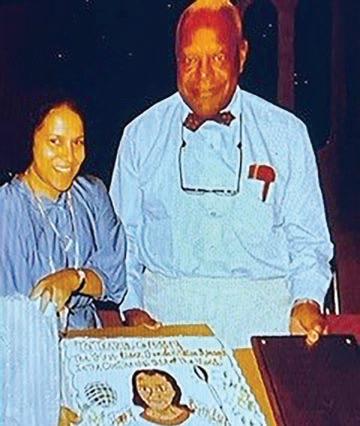

Feminist and Civil, Human, and Women’s Rights Activist
In addition to serving as the first female TV station manager in the US, she was also an institution builder and organizer of various activities. She was very committed to ending discrimination and inequality in its various forms, including by race and gender. She was outraged that women were denied credit without her father or husband’s co-signature, so she and 2 other women with similar interests, organized the first Feminist Federal Credit Union in Detroit, MI to extend sole credit to women members. Tenicia fervently believed that women must take control of their own lives and their finances, and be self-disciplined and determined to save money and spend wisely, to secure a better life independent of any spouse. She fought for anti-discrimination, until the Equal Credit Opportunity Act of 1974 was established, that prevented banks from requiring a male cosigner, and asking personal questions about a woman’s reproductive plans, to determine if they were eligible for a loan. Tenicia also served as Chair of the Board of Directors for several years in the credit union that was insured by the FDIC. She was also active in the National Organization of Women (NOW) and the Women’s Liberation Coalition of Michigan (WLCM). She spent her entire life fighting for the rights of women and Blacks, including fighting for the legislation of Roe vs. Wade and many programs for black youth. She was committed to the truth and to equality and she was on a mission to make it right. Gregory was a trailblazer in her own right.
Being present for her family at all times, was an expectation that never went unfulfilled. Many people sought her out for personal and professional advice and counsel. Robert Byrd III of WGPR stated, “She brought me on as an intern … when none of the other stations would touch me. She provided me the opportunity that resulted in me being hired onto the "Big City News" staff at the completion of the internship and then two years later had the faith and confidence in my abilities earned me a promotion to the News and Sports Director position…. I will forever be indebted to your mother for that and the mentor, kind and loving spirit she was. Without them there would be no BET, Oprah Winfrey Network, Tyler Perry Studios, Byron Allen or anyone of thing else. Their legacy will last forever.”
Tribute to a Trailblazer
TV-62, Inc. RJ Watkins shared, “Over 40 years ago, I met Ms. Gregory, after working with The Scene… one day, I submitted a proposal for a Late Night Radio show and she gave us a 90-day (trial run) contract, that afforded us a 40-plus year relationship with WGPR Radio and Television. To this day, I am the executive producer of WGPR 107.5. I followed the path of Dr. Banks and Ms. Gregory and I am now a radio and television station owner myself and I am forever grateful.”

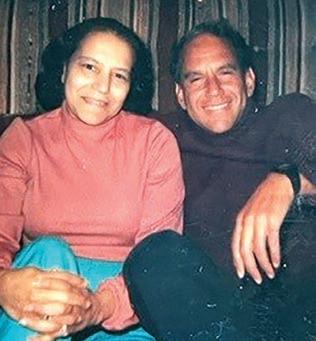
While managing the 2 stations, Tenicia hired and trained young people without broadcasting skills, to develop proficiencies for employment in the broadcast industry. Joe Spencer stated, “It was Tenicia's connection with the university community that lead to the start of our internship program which was the pathway for so many of the successful alumni start at TV62."
She never cared about the material things in life, only the people she loved. Her grandmother instilled in her to love one another, because nothing was more important than family. For Tenicia, family could do no wrong, and her family was at the center of her life. She enjoyed sewing and made outfits for the family and she also loved to bake, especially birthday cakes and treats for her children. Her husband of 63 years, Dr. Karl D. Gregory shared, “Tenicia was a genuine, positive, personable and caring person. She was also a loving wife, mother and co-provider for her family. She had a way of speaking to people in a WARM way that resonated with the listener, helping her to form many lasting and close friendships. Above all, she was devoted to her family whom she put first in her busy, highly productive and activity filled life. The huge legacy of love, caring and institutionand family-building she leaves can only soften our great loss.”
On September 10, 2022, the WGPR Historical Society’s fundraising gala celebrated diversity in media. ESPN anchor Stephen A.
The ICON,
Tenicia Ann Banks Gregory transitioned peacefully with dignity, courage and grace on Sunday, August 21, at the age of 88, after 6 years managing her dementia and later Alzheimer’s disease. When she was unable to care for herself with the help of her brother Alterio, she moved to Atlanta in the care of her youngest daughter Sheila Gregory, and passed peacefully in home hospice, surrounded by family and friends. She leaves her husband of 63 years, Dr. Karl Dwight Gregory, daughters Karin Diane Gregory of Southfield, MI, and Sheila Therese Gregory (Stephen) of John’s Creek, GA, and her beloved son, Kurt David Gregory (Sarasota, FL),
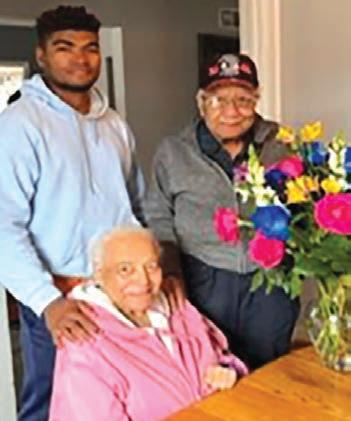


of
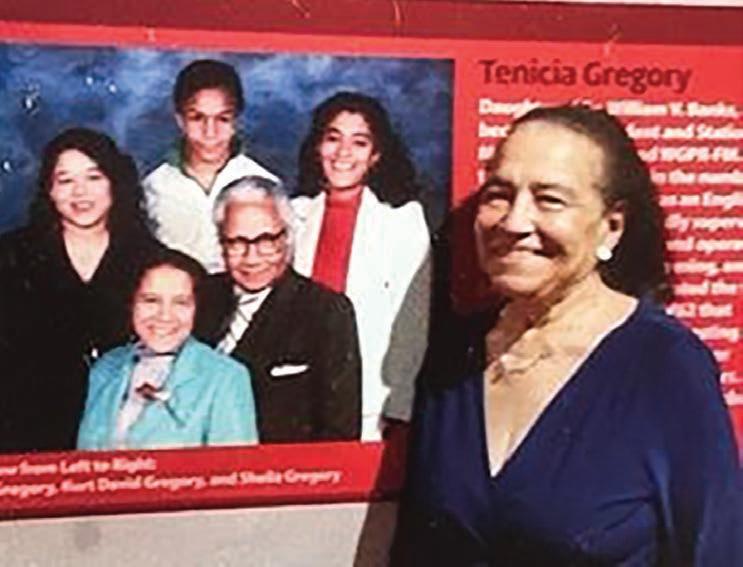 Tenicia Gregory smiles near a photo that is on exhibit at the museum
Tenicia Gregory with husband and daughter at the Grand Opening of the WGPR TV exhibit
Tenicia Gregory graduates from Wayne State Univ. in 1955
This past March 2022, the William V. Banks Broadcast Museum & Media Center held a small celebration to honor Tenicia for her leadership, courage, strength and tenacity running the first Black-owned and operated radio and television station in the US. Several people she hired many years ago came out to honor her, including R.J Watkins, who she mentored and he opened his own radio and TV station in Detroit, Nat Morris who directed the Scene, the Electrifying Mojo who showered mom with a large flower arrangement, members of International Free and Modern Masons and many others who anchored the news, entertainment programs and other successful positions, because she believed in their potential as young Black professionals.
Smith headlined the event at
honoring Dr. William V. Banks and others, including Tenicia.
devoted brother Alterio Banks of Carpinteria CA, sister Harumi Banks
WA, and half-sister, Wendy Ogletree of Brighton, MI, and her grandchildren, Courtney Gregory Jones of John’s Creek, GA and Anthony Kelly Gregory Jones of Rock Hill, SC, along with many relatives and dear friends. Tenicia’s legacy provides a ripple effect that continues to live on in all those she blessed with her care, kindness, friendship, and love--from her students, employees, fellow volunteers, business associates, friends, and family.
A special tribute to a special lady. Thank you, Tenicia Gregory for your commitment to trainingand serving the community. Thank you to the Banks and Gregory families for making WGPR TV 62 and WGPR Radio available to all of us.
Ms. Gregory with her brother
Ms. Gregory honored as first black female TV station manager in the U.S. (WGPR TV 62). She is shown here with her father, Dr. William Banks, the station’s first president and general manager.
WGPR TV 62 opens in Detroit - How it all started 1975
Tenicia Gregory with her family
Tenicia Gregory in her very early years
Tenicia in her most recent photo with family
Dr. Karl Gregory, daughter Sheila Gregory and Tenicia Gregory
Tenicia Gregory smiles near a photo that is on exhibit at the museum
Tenicia Gregory with husband and daughter at the Grand Opening of the WGPR TV exhibit
Tenicia Gregory graduates from Wayne State Univ. in 1955
This past March 2022, the William V. Banks Broadcast Museum & Media Center held a small celebration to honor Tenicia for her leadership, courage, strength and tenacity running the first Black-owned and operated radio and television station in the US. Several people she hired many years ago came out to honor her, including R.J Watkins, who she mentored and he opened his own radio and TV station in Detroit, Nat Morris who directed the Scene, the Electrifying Mojo who showered mom with a large flower arrangement, members of International Free and Modern Masons and many others who anchored the news, entertainment programs and other successful positions, because she believed in their potential as young Black professionals.
Smith headlined the event at
honoring Dr. William V. Banks and others, including Tenicia.
devoted brother Alterio Banks of Carpinteria CA, sister Harumi Banks
WA, and half-sister, Wendy Ogletree of Brighton, MI, and her grandchildren, Courtney Gregory Jones of John’s Creek, GA and Anthony Kelly Gregory Jones of Rock Hill, SC, along with many relatives and dear friends. Tenicia’s legacy provides a ripple effect that continues to live on in all those she blessed with her care, kindness, friendship, and love--from her students, employees, fellow volunteers, business associates, friends, and family.
A special tribute to a special lady. Thank you, Tenicia Gregory for your commitment to trainingand serving the community. Thank you to the Banks and Gregory families for making WGPR TV 62 and WGPR Radio available to all of us.
Ms. Gregory with her brother
Ms. Gregory honored as first black female TV station manager in the U.S. (WGPR TV 62). She is shown here with her father, Dr. William Banks, the station’s first president and general manager.
WGPR TV 62 opens in Detroit - How it all started 1975
Tenicia Gregory with her family
Tenicia Gregory in her very early years
Tenicia in her most recent photo with family
Dr. Karl Gregory, daughter Sheila Gregory and Tenicia Gregory



C ity. L ife
5 Healthy Habits to Help Reduce Stress
(Family Features) Between work, family obligations and a constantly changing world, people in the United States are stressed. In fact, U.S. workers are among the most stressed in the world, according to a State of the Global Workplace study. While some stress is unavoidable and can be good for you, constant or chronic stress can have real consequences for your mental and physical health.
Chronic stress can increase your lifetime risk of heart disease and stroke. It can also lead to unhealthy habits like overeating, physical inactivity and smoking while also increasing risk factors, including high blood pressure, depression and anxiety. However, a scientific statement from the American Heart Association shows reducing stress and cultivating a positive mindset can improve health and well-being.
To help people understand the connection between stress and physical health, the American Heart Association offers these science-backed insights to help reduce chronic stress.

Stay Active
Exercise is one of the easiest ways to keep your body healthy and release stress. Physical activity is linked to lower risk of diseases, stronger bones and muscles, improved mental health and cognitive function and lower risk of depression. It can also help increase energy and improve quality of sleep. The American Heart Association recommends adults get at least 150 minutes per week of moderate-intensity activity, 75 minutes of vigorous activity or a combination.
Meditate
Incorporate meditation and mindfulness practices into your day to give yourself a few minutes to create some distance from daily stress. Some studies show meditation can reduce blood pressure, improve sleep, support the immune system and increase your ability to process information.
Where City Meets Life and Life Meets Style
Find a Furry Friend
Having a pet may help you get more fit; lower stress, blood pressure, cholesterol and blood sugar; and boost overall happiness and well-being. When you see, touch, hear or talk to companion animals, you may feel a sense of goodwill, joy, nurturing and happiness. At the same time, stress hormones are suppressed. Dog ownership is also associated with a lower risk of depression, according to research published by the American Heart Association.

Practice Positivity
A positive mindset can improve overall health. Studies show a positive mindset can help you live longer, and happy individuals tend to sleep better, exercise more, eat better and not smoke. Practice positive selftalk to help you stay calm. Instead of saying, “everything is going wrong,” re-frame the situation and remind yourself “I can handle this if I take it one step at a time.”
Show Gratitude
Gratitude - or thankfulness - is a powerful tool that can reduce levels of depression and anxiety and improve sleep. Start by simply writing down three things you’re grateful for each day.
Find more stress-management tips at Heart.org/stress.
Stress 101
Understanding stress is an important step in managing and reducing it. Consider
Abundance Is Waiting In 2023
By: Sherri Kolade“Any time you stop producing and focus only on consuming, you have nothing to be proud of other than what you consume…if you don’t produce and wait on someone to hire you and give you a vision, you may not get there,” Bishop T.D. Jakes said on the concept of obtaining abundance. “Until we start taking over our community understanding our marketplace and get our lion’s share of the marketplace, will we never get up.”
What does abundance look like in 2023?
For Black people and the BIPOC community at large could that be having more in the bank (and in the mind) without having to scrape by, despite what the economy says? Or breaking multi-generational habits due to a scarcity mindset or feeling like there is not enough to go around even though there is?
According to reports, an average Black family has less than one-tenth of the household wealth of their white counterparts.
“The progress of the American middle class is often measured in generations. People like to know they have done better than their parents— and that their children will do better still,” Bloomberg reported. “For all the dislocation that the pandemic caused and all the gloom out there about a looming recession, people in the American middle class are remarkably optimistic about the longterm, believing that their children will land well.”
Bloomberg added that some answers involve consumers looking to possibly cut back on purchases to save money.
Oprah Winfrey once said, “If you look at what you have in life, you’ll always have more. If you look at what you don’t have in life, you’ll never have enough.”
Local business owner Kenji Lem-
on builds financial wealth one day at a time for his family and said he’s going for the opposite mindset by building abundance within his family and leading by example.
The Detroit-based owner of One Stop Property Maintenance LLC previously told the Michigan Chronicle that living in abundance is about not being anxious and repeating the same decisions that keep people stuck.
“For a long time, I’ve been focused on being prepared for the future,” Lemon said, adding that abundance can be within the community, too, by locally circulating the Black dollar longer for a win-win. “I’m a Detroit resident operating a business within Detroit, open to hiring Detroiters with barriers to employment, that services other entrepreneurs in Detroit. Every dollar that I generate gets funneled back into the city multiple ways,” he said.
While the pandemic has shaken the foundation of Black people who are still recovering financially due to long-term sicknesses, job loss-
es (four-in-10 Black adults lost jobs or wages since March 2020), mental health woes and more – getting back in control of their finances and paving a path toward abundance does not have to be an overwhelming task.
Career Strategy Speaker and expert Tristan Layfield, also a LinkedIn Top Voice 2020, told the Michigan Chronicle recently that living in abundance equates to being prepared and having multiple streams of income because sometimes one job alone is not enough.
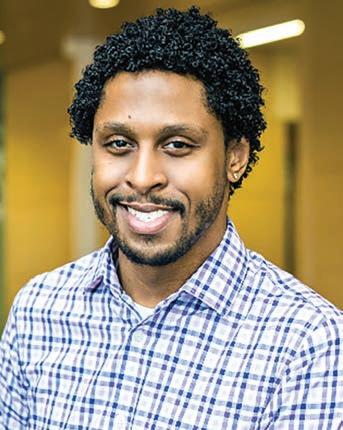
“We have a very large majority of people who aren’t getting paid enough,” he said, adding that one job is not sustaining them or padding their retirement. “[With] people who [are] middle-income workers … it’s unsurprising that people would [explore more] opportunities. I think at this point in time one of the things that a lot of people are doing is just trying to survive.”
Layfield adds that living comfortably and in abundance looks different for different people – but it’s important when striving for abundance to aim toward a number that makes sense for one’s situation.
“What’s going to make me comfortable is completely different than somebody [else] my age,” he said, adding that when working toward abundance whether financially, emotionally, physically or something else altogether, it’s important to remember that it’s a mindset first and not a rat race to the finish line of prosperity, which he describes as a “symptom of capitalism.” “In America we’ve sort of been taught that you know if we have downtime there’s a way to monetize that and … I think we all are going to feel like ... the burden [of that].”
The solution on the way to the top with abundance?
“I think for us to be able to be functional members of society ... who are satisfied in our lives we need a balance of work and personal,” he said.
“Detroit Soul” Opens Second Location
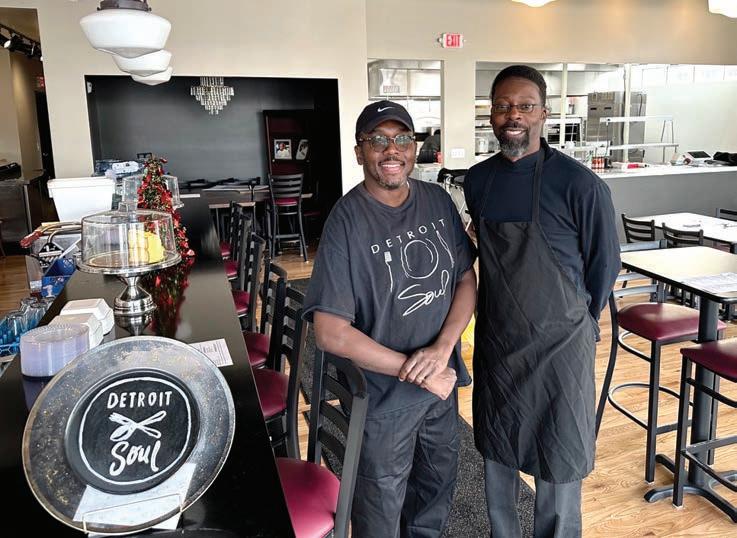 By Rasha Almulaiki
By Rasha Almulaiki
Detroit
Serving
into a hot spot for family dining and carry out while modeling an investment in community-centered practices.
Van Buren and Brown sat down with the Michigan Chronicle to talk about what inspired the idea for the restaurant and how they find their roots in the
community’s economic empowerment and family-centered, healthy eating.
“We wanted to bring homestyle soul food cooking into the city neighborhoods because, growing up there, we never needed to go out or downtown,” said Brown. “Everything we needed was around us, from where you got your hair cut to where you found your groceries. And when we thought of opening up our 8 Mile location, we’re looking at the need now, the need was to bring food, good food, to the neighborhood.”
Brown said the idea for the restaurant can be traced back to childhood family reunions he went to every summer down South. He said the stovetops were always kept busy cooking up a storm of traditional food for the entire family.
“Waking up 6 or 7 in the morning, you will see these huge pots on the stove cooking,” said Brown. “All day, we would be called into the house and there was always something cooking from one meal to the next. That became what these reunions were about…gathering around each other with food made from the heart.”
Van Buren and his brother have been catering soul food in the community for 30 years while working at corporate jobs before deciding to quit and find fulfillment in nurturing the community with food.
“We are really feeling great,” said Brown. “Coming out of the pandemic, it was a very dismal time. It was a busy time for us as a business. But it was a dismal time because of the loss we were experiencing. Our catering business went from catering celebrations, weddings, reunions, baby showers to funeral repasts. It was hard being a part of that loss in our community. Every day, it was repast, repast, repast. So now, we are very fortunate, very energetic as we keep contributing back in pieces where we feel it’s been special to open up this second place and keep engaging.”
Detroit Soul’s second location at 14300 E. Jefferson in Detroit, was awarded a cash grant of $60,000 from the Motor City Match program’s 18th round. Brown and Van Buren received the help they needed from the funds to renovate their building from the old Kresge Building Department store.
Prior to the December 14 opening,
Stress
these things to know about stress and how it could affect your life:
* Today, 1 in 3 adults in the U.S. report being worried or depressed.

* Higher levels of the stress hormone
Brown and Van Buren joined the Jefferson Chalmers Neighborhood Association and had to pitch the restaurant to the members on how it will serve the community’s needs.
“They told us they want to have a dine-in so they can come back to that idea of gathering with family,” said Brown. “A lot of what they were asking for were things we are already committed to. They wanted to have fresh food on the table. They wanted to have a restaurant that could be a part of the community, like jobs to hire locally and being involved in the activities around us.”
A farm-to-table restaurant, Detroit Soul sources 90 percent of its food from local food producers. Brown said they provide healthier alternatives to the high cholesterol diet of traditional soul food with more leafy greens and meat cut with less fat.
Both locations of Detroit Soul are staffed with local hires, which Brown said supports the city’s economy by supporting the residents.
The business also hosts opportunities to engage the youth in job training.
“We have summer youth programs for kids around 14, 15 years old and give them jobs at the restaurant,” said Van Buren. “We train them in how to do customer service, getting along with each other, leadership skills and work experience. They also do get paid doing it, while they are learning how to work.”
Coming up next for the restaurant, next February the Jefferson street location will debut an ice cream soda parlor serving nostalgic favorites like Boston coolers, creamsicle and root beer floats.
cortisol are linked to increased risk of high blood pressure and cardiovascular events like heart disease and stroke.
* The top sources of stress are money, work, family responsibilities and health concerns.

* Work-related stress is associated with a 40% increased risk of cardiovascular disease like heart attack and stroke.

Keeping You Informed Away or at Home.

For kids born just before and during the pandemic, the world has been very small But now that the safe and effective COVID-19 vaccine is authorized for those 6 months and up … it’s about to get a whole lot bigger.

Committing to getting fit and actually doing it aren’t always one and the same but relying on tech devices can be an effective way to tackle your fitness goals.

From watches and phones to earbuds and virtual reality headsets, technology can make it easier to track your progress and create a more enjoyable workout experience. See how some of the latest technology is fueling new devices ideal for amping up your workouts this winter with these trendy ideas. Find more inspiration to energize your fitness regimen at Qualcomm.com.
A Smart Workout Buddy
If you’re always on the go, a powerful smartphone is a smart way to get in a streamlined workout. An option like the OnePlus 10T 5G delivers on multiple levels.
Driven by the powerful Snapdragon 8+ Gen 1 mobile platform, this is a phone built to evolve beyond speed. It has Qualcomm FastConnect 6900 for premium Wi-Fi connectivity and a Kryo CPU for unbeatable performance, ideal for multitaskers and power users. The charging system delivers a day’s power in 10 minutes. What’s more, the antenna system, featuring a total of 15 antennas, provides a 360-degree closed-loop system to avoid blind signal angles, while simple and textured visuals help you focus and move seamlessly between work, rest and play.

Sound to Motivate More Movement
An energizing workout requires a soundtrack to get you pumped up and moving. Enhance your listening experience with LG Tone Free T90 wireless earbuds, which feature Dolby Head Tracking and Snapdragon Sound. These earbuds identify the location of sound as you turn your head, recalibrating to enable a more natural sound experience so you’re always in the center of the scene. The speaker driver is made of a strong, lightweight material that delivers better overall audio clarity and reduced vibration so you can hear every sound come alive. Exceptional audio combines with superior connectivity for music, movies, crystalclear voice calls, gaming and a low latency fit for aptX Adaptive compatible devices.

Track Your Progress
Setting fitness goals starts with a plan and achieving them requires strong work ethic and, just as importantly, the ability to track progress so you can enjoy the success. The ultimate expression of ultra-portability and versatility, the Lenovo IdeaPad Duet 5 Chromebook is powered by the Snapdragon 7c Gen 2 Compute Platform. Slim and sleek, this 2-in1 features a detachable keyboard to transform from a tablet to a laptop so you can keep an eye on your fitness goals whether you’re working out at home or on the go, and 15 hours of battery life means you can enjoy usage from day to night.

Wellness You Can Watch
Powered by the Snapdragon 4100+ Wear Platform, the Fossil 6 Wellness Edition watch provides the speed, power and performance you need to efficiently track your health, all with extended battery life, Bluetooth 5.0 LE connectivity, rapid charging and more features to elevate your experience. The watch detects movement and starts a workout for you. In addition, not only does it allow you to monitor how hard your heart is working and provide estimated blood oxygen measurements so you can see how well your body is circulating oxygen, but it also measures your cardiorespiratory fitness, allowing you to track the amount of oxygen your body utilizes during exercise. In addition to keeping tabs on your active hours, the watch also helps you understand more about your sleep habits, including sleep quality and history, restfulness and progress against sleep goals.

Music to Power Your Workout

Enjoy stereo-quality sound wherever your workout takes you with a state-of-the-art smartphone like the Motorola Edge+ Gen 2, powered by the Snapdragon 8 Gen 1 Mobile Platform. Giving you up to two full days of power, lightning-fast speeds and pro-quality features for doing more of what you love, this smartphone can provide music that motivates you regardless of your exercise style. When it’s time to rest and recover, you can enjoy days of entertainment on a beautiful display that wraps around the edges.
Play Your Way to Fitness
If your workout regimen needs an infusion of playful fun, the Meta Quest 2 virtual reality headset may be just the ticket. This VR headset is your ticket to the metaverse (and so much more), whether you’re working out, gaming, meeting up with friends or going on a virtual field trip. Industry-leading graphics and immersive audio put you in the middle of the action. The portable device is ideal for workouts on the go, and you’ll find a wide range of apps that let you work out amid stunning scenery, compete against friends and participate in challenges. The immersive experiences break up the monotony of a boring, basic workout, making exercise fun and playful.

Upgrading your home design is an opportunity to tap into new color schemes. Knowing what shades are trendy and how different hues can work together for a cohesive design is an important step in creating an attractive design aesthetic.
While you might turn to family or friends for inspiration for your next DIY project, another resource for collecting concepts and options to upgrade your space is the internet. Consider the Valspar Colorverse, which allows visitors to explore colors in a unique way and offers paint color inspiration and decor trends they can envision within their own homes.
The interactive virtual home showcases the latest paint and design trends so you can get creative for your next project. After experiencing the Valspar 2023 Colors of the Year firsthand by painting walls and art from the collection to see the 3D virtual house come to life, you can find the perfect paint shade for your space.
“Through the Colorverse, visitors can experience the 12 Colors of the Year in a realistic virtual home,” said Gus Morales, vice president of brand marketing for CBG SherwinWilliams. “Aside from exploring the Colors of the Year, the home is an engaging space for visitors to create art, play games and order paint chips to see how their top color picks look and feel in their homes.”
Color Trends to Consider
Many of this year’s popular natureinspired designs are all about finding comfort, embracing a flexible lifestyle, rediscovering joy and leaning into the growing DIY movement. The most trendworthy, forward-thinking and livable colors reflect specific facets or emotions of life so you can update your wellused spaces with thoughtful colors that evoke positive energy and lasting change.
Comfort and Contentment: If your goal is to create a space that envelopes you in a sense of comfort, consider a white with a yellow undertone that makes a space cozy like a soft blanket, like Cozy White from Valspar. Complement the softness with a muted clay that brings in brown undertones that suggest gentle contentment.
Calming Restoration: Tap into the calming tones of nature with a hazy green that has duality, which brings in both the calm and liveliness of the great outdoors. Another option is a deep midnight blue used as an elegant calming shade to restore mind, body and home.



Healthful, Mindful Living: Create an uplifting space where your wellness is a priority. Evoke a greater sense of health consciousness with a light blue that has a dose of softness used as a fresh neutral with uplifting qualities of a modern pastel, like Valspar’s Rising Tide. Reinforce the benefits of mindful living with a cool gray that is balanced by the warmth of the yellow undertone, a natural hue like a cotton muslin cloth.
Connections and Joy: Establish spaces where you can celebrate relationships with others, the world around you and happiness in your being. Consider hues like a white softened by a violet undertone, a harmonious shade promoted by digital connectivity. Evoke joy with a dependable classic tan that features a yellow undertone suggesting new life with uplifting qualities.
Natural Balance: Bringing hints of the outdoors into a well-loved living space creates a soothing ambiance. Consider a warm neutral brown tone inspired by the shades found in nature or a cooled down blue that strikes a beautiful balance between cool and warm shades in your design.
Inspirational Thought: A workfromhome or crafting space needs color to inspire great thinking. Try a faded natural terracotta that sparks individuality and warmth or a deep blackened olive, an on-trend neutral that embodies charm and sophistication.
Explore the tool and find more colorful ideas at Valspar.com.
Navigate New Colors
Exploring color options before you apply them to a home improvement or design project gives you the chance to experience and visualize different styles before you fully commit. Using a tool like Valspar’s Color-verse, a 3D virtual home, you can experience on-trend color palettes that inspire your next big
project through resources like:
n An interactive feature that allows you to repaint walls of a living room, dining room, bedroom, bathroom, kitchen, walls and cabinets using the 12 Colors of the Year then takes you directly to the site to order free paint chips to try at home
n An artistic element where you can create a 3D panorama nature scene, explore others’ artwork and share creations on social media
n A lighthearted game that inspires you to get on the road to gather your home improvement essentials


